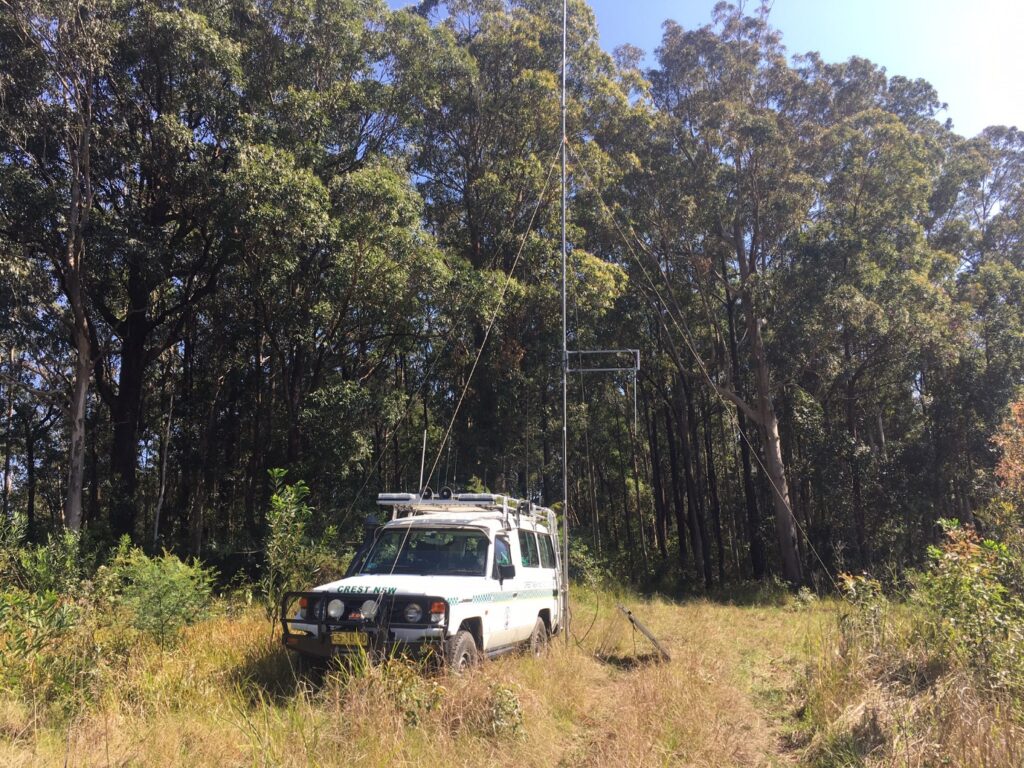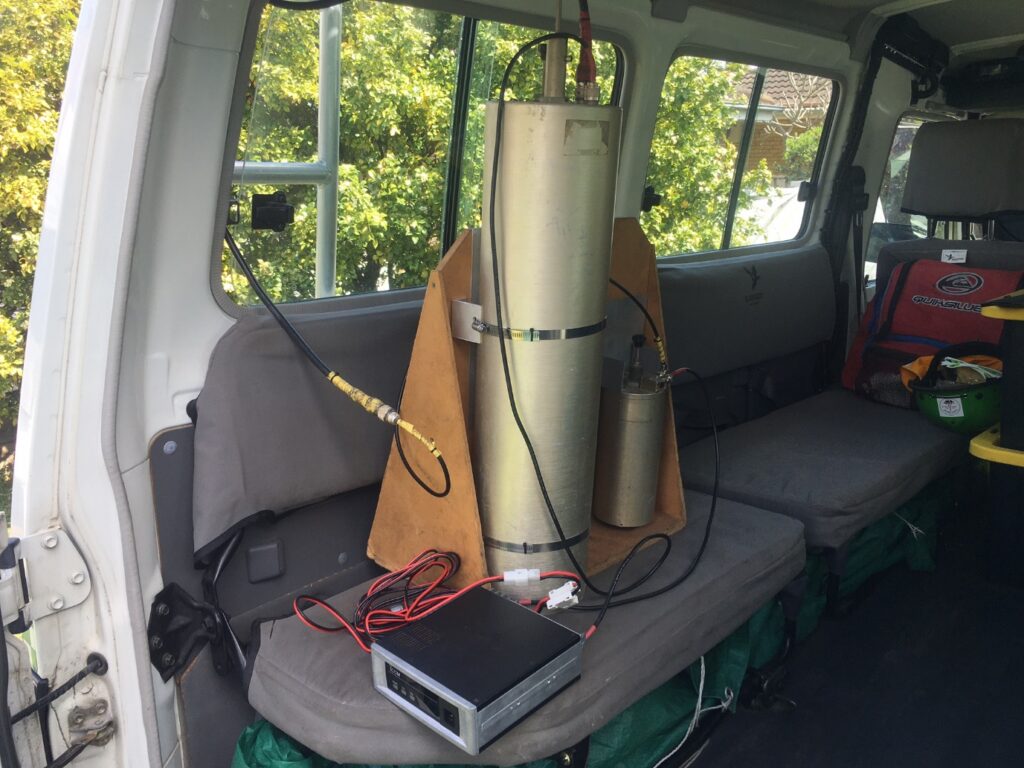It was good to see this event get back on its feet following Covid-19 and wet weather. Run by Myall District Motor Sport, it uses a section of Wooten Way at Boolambyte NSW. This year 40 vehicles entered the event.
The task of CREST NSW Inc is to provide local communications for the organisers and community. The best solution is a temporary UHF CB repeater set up at a elevated location using the channel pair 7/37 as per our Apparatus Licence. We set up the repeater near Koolonock Fire Trail which overlooks the race section.
Normally, we would use a duplexer and a single antenna. For the sake of portability and experimenting, on this occasion we used the two-antenna method with both antenna coaxial cables running through a “TX-RX Systems” Vari-notch cavity filter.
It is a case of “horses for courses”, a duplexer will be needed particularly if the chosen site is a community repeater station with plenty of RF around. The duplexer also pretty much takes up half of the back of the Troop carrier. On the plus side, the signal response into and out of the antenna is reciprocal since a single antenna is used.
Some niceties of using the two-antenna method is that the filtering is more compact and that there is much less insertion loss on the frequency pair – just over 1dB whereas the insertion loss through a duplexer is around 3dB. The down side is that there can be a disparity in coverage between the Receive antenna (always located at the top of the mast) and the transmit antenna (located lower down, with a null located in the direction back towards the mast).

The mast is 10m tall with the transmit antenna upside down to keep a 6m spread from the receive antenna at the top. If the transmit antenna were to be mounted upright, then the effective spread would be reduced by the height of the transmit antenna which may or may not result in desensitization of the receiver. Total isolation between antennas = physical spread + that from any filtering placed in line.
For this task, a software program assisted to determine that 4.5 dBi colinear antennas would be most suitable to cover the desired area. We are using a ZCG Scalar antenna for the receiver and a Mobile One antenna for the Transmitter.

We usually carry a lot of equipment in the rear for contingencies that can make it difficult to see the forest for the trees. We are using an Icom UR-FR6000 as a single channel repeater and with this filter pack and two-antenna method, the sensitivity of the receiver is an amazing 0.186uV to open the mute. Current draw on standby is in Philips FM828 territory – 0.35A making it ideal for solar sites. The two coaxial cables coming down the mast from the antennas is Belden 9913 and has half the loss of RG213. This is the best you can do in a portable set up. The patch leads are RG-223, which is a double screen RG-58. The 6 5/8” tall cavity filter is for the receiver (which passes UHF 37 and rejects UHF 7) while the 4” short cavity filter is for the transmitter (which passes UHF 7 and rejects UHF 37). There is no desensitization from this antenna system.
